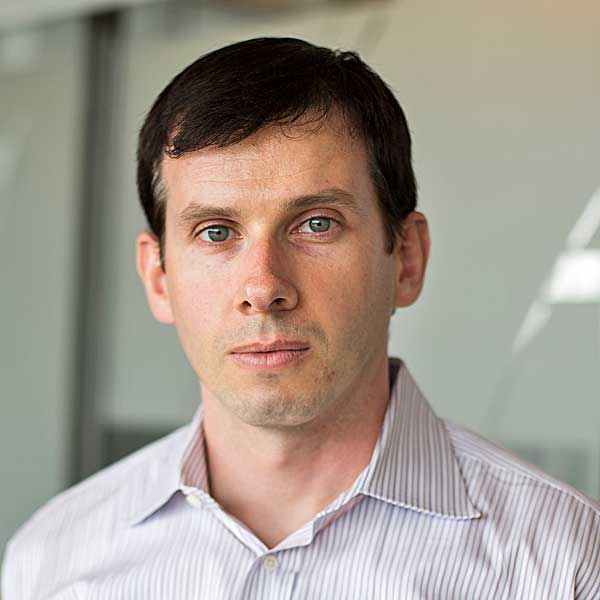Professor Timothy F. Scott
Timothy F. Scott, Ph.D. is Assistant Professor of Chemical Engineering at the College of Engineering, University of Michigan, Ann Arbor. His research focuses on the kinetics and thermodynamics of radical and dynamic covalent reactions for the fabrication and manipulation of polymers. Tim is also leading the Scott Polymer Dojo Research Group at the same University.
Research within the Scott group is focused on exploiting the attributes of free radicals for unique polymer fabrication and manipulation strategies to yield materials for biomedical devices, membrane separators, energy capture, and storage media. Free radicals are uncommonly potent reactive species that find utility in small molecule synthesis, redox chemistries, and polymer production. The generation of these species can be readily induced via UV or visible light irradiation of photosensitive compounds, allowing facile temporal and spatial control over radical-mediated reactions.
Tim earned his Bachelor’s Degree in Science in Chemistry in 2002 from the University of Melbourne, Australia. He earned his Ph.D. in Material Engineering in 2006 from Monash University in Clayton, Victoria, Australia.
He proceeded to a postdoctoral research position with Professor Christopher Bowman in the Department of Chemical and Biological Engineering at the University of Colorado at Boulder, followed by a Research Assistant Professorship in the Department of Mechanical Engineering at the same institution between 2008 and 2011.
Recently, in January 2019, a research article about the new 3D Printing technology developed by researchers from University of Michigan came out, titled Rapid, continuous additive manufacturing by volumetric polymerization inhibition patterning, of which Tim was co-lead and coauthor:
Tipped to be 100 times faster than other commercially available technologies, the technique is also capable of rendering a 3D object with just a single flash of light rather than layer by layer. As such, UMich researchers are calling the system:
“Using conventional approaches, that’s not really attainable unless you have hundreds of machines.”
His publications include:
- Photoinduced plasticity in cross-linked polymers, 2005
- Thiol− Yne photopolymerizations: novel mechanism, kinetics, and step-growth formation of highly cross-linked networks, 2008
- Click chemistry in materials science, 2014
- Two-color single-photon photoinitiation and photoinhibition for subdiffraction photolithography, 2009
- Covalent adaptable networks (CANs): a unique paradigm in cross-linked polymers, 2010
- Rheological and chemical analysis of reverse gelation in a covalently cross-linked Diels− Alder polymer network, 2008
- Photo-DSC cure kinetics of vinyl ester resins. I. Influence of temperature, 2002
- Actuation in crosslinked polymers via photoinduced stress relaxation, 2006
- Stress relaxation via addition− fragmentation chain transfer in a thiol-ene photopolymerization, 2009
- Photomechanics of light-activated polymers, 2009
Read his paper Approaches and challenges in the synthesis of three-dimensional covalent-organic frameworks.
Visit his University profile. View his ResearchGate profile and Google Scholar profile.





